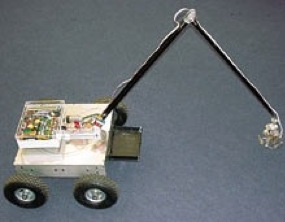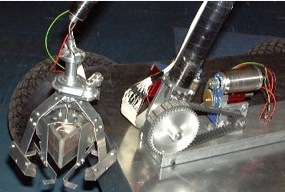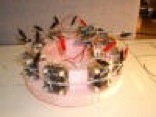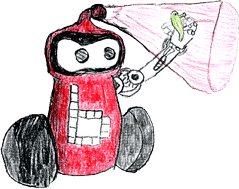The robot can track, capture and dispose of slugs. About the size of a lawn mower. Slugbot features a 1.5m long robotic arm, mounted on a turntable, which shines a red light that lets the robot detect the slugs. It is hard to see slugs in the daytime, but the red light makes them visible. Grass and vegetation appear dark under a red light, but the slugs show up as brightly lit. The robot has a CMOS image sensor that can detect the bright slugs. The arm then picks up the slugs and deposits them into a hopper where bacteria decompose the slugs. To find the station to deposit the slugs the robot uses a GPS system. Ultrasonic sonar and touch sensors are used by Slugbot to navigate and avoid obstacles.
The energy from the decomposing slugs is then used to refuel Slugbot. This is a practical use for the microbial fuel cell which is under development.
Slugbot is currently in the prototype stage. One goal of the project is to make a robot that is self-sufficient like an animal in both information and energy. Slugs were picked because they are a real problem for agriculture, they are soft without a shell or skeleton, they are large in comparison to many pests, and most of all, they are slow enough for Slugbot to catch. [14]
SlugBot - Big Idea In Development

Back to Current State
TIME 2001 invention of the year: Slugbot


Slugbot was just the first phase of the research being done. Now the university has moved on to the creation of Ecobot II. The objective here is to create energetically autonomous robots. These robots would get all of their on board power from microbial fuel cells and carry no batteries. Ecobot I was a sugar eating robot and Ecobot II eats dead flies or rotten fruit.




Slugs are a nightmare for farmers. They eat leaves of growing crops like lettuce and put big holes in fruit like tomatoes. Ian Kelly and the University of West of England, Bristol, has invented a robot that will stop all of that. It is called Slugbot.